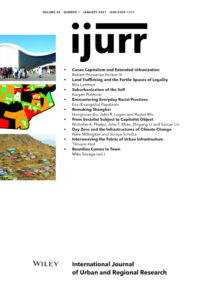This article reveals how newcomers weave their own threads into the fabric of urban infrastructure. Entangling their own with other urban assemblages, newcomers generate multi‐layered dynamics situationally in order to render possible the lives to which they aspire. They forge openings where there seemed none before and keep negative potentialities in check. To offer an ethnography of how the Senegalese presence in Rio de Janeiro has grown dynamically between 2014 and 2019, I draw analytical strength from the double meaning of agencement: the action of interweaving varied socio‐material components—agencer—so that they work together well, and the resulting assemblage of social and material components. Two case studies act as a starting point: how Senegalese came to inhabit an urban architectural landmark and how they regularize their residence status. Their transformative power of city‐making is generated both through the mutual intertwining of a dahira, a religious group of Senegalese migrants, and a diasporic Senegalese association and through the ways in which the Senegalese interweave themselves and their institutionalized collective forms with ever more socio‐material components of the urban space. Beyond the better‐known transnational embeddedness of the Senegalese, their complex infrastructuring practices upon arrival become constitutive of new urban realities, moulding the city fabric of which they are becoming part.

